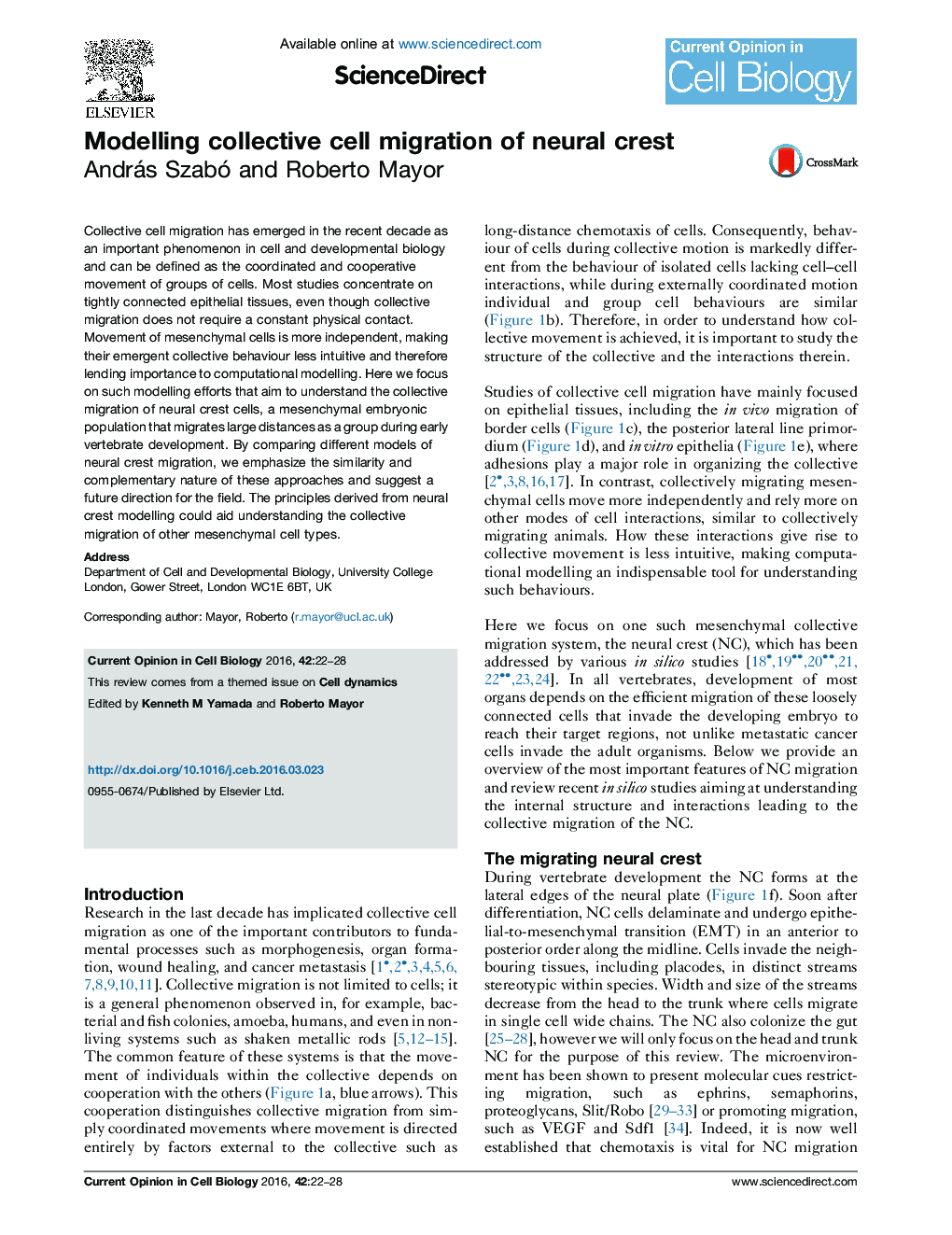| کد مقاله | کد نشریه | سال انتشار | مقاله انگلیسی | نسخه تمام متن |
|---|---|---|---|---|
| 2169686 | 1549464 | 2016 | 7 صفحه PDF | دانلود رایگان |
• Collective cell migration emerges from factors both internal and external to the collective.
• Stable cell adhesion is not essential for collective cell migration.
• A self-generated gradient drives NC migration in a follow-the-leader type model.
• Cohesion and polarisation result from co-attraction and contact inhibition of locomotion.
• Integration of complementing models could explain NC-placode interactions.
Collective cell migration has emerged in the recent decade as an important phenomenon in cell and developmental biology and can be defined as the coordinated and cooperative movement of groups of cells. Most studies concentrate on tightly connected epithelial tissues, even though collective migration does not require a constant physical contact. Movement of mesenchymal cells is more independent, making their emergent collective behaviour less intuitive and therefore lending importance to computational modelling. Here we focus on such modelling efforts that aim to understand the collective migration of neural crest cells, a mesenchymal embryonic population that migrates large distances as a group during early vertebrate development. By comparing different models of neural crest migration, we emphasize the similarity and complementary nature of these approaches and suggest a future direction for the field. The principles derived from neural crest modelling could aid understanding the collective migration of other mesenchymal cell types.
Journal: Current Opinion in Cell Biology - Volume 42, October 2016, Pages 22–28
